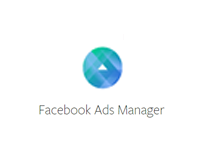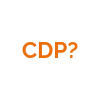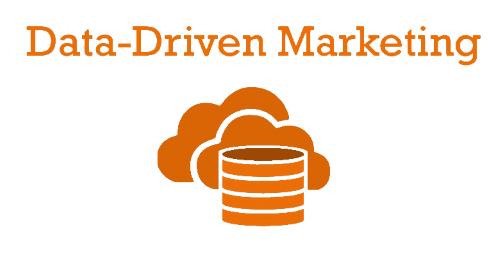In the last 10 years, Marketing Automation was really a hot topic: it gave marketers the ability to
- Automate marketing communications in email (e.g., Mail everyone who subscribed this mail)
- Personalize emailing (e.g., “Hi Bram, we have news for you”)
- Set-up campaign orchestration (e.g., Mail Bart, then wait for 7 days, then – if not opened - mail again”)
- Do triggered mailing (e.g., If you have abandoned cart, we’ll mail you).
However, once there, marketeers want more. They want to run the same marketing automation across all their channels (ad-targeting, website personalization, chatbot integration) and so the question remains:
“How can I orchestrate consistent personalization across all my channels
including offline, online, mail & advertising?”
What do marketeers dream of?
Every marketer wants to know as much as possible about his or her customers. Successful marketers strive to understand their customers so they can pick the right channels and the right messages to reach them with the right offer.
The best way to understand your customers is through data. With the right data-driven marketing set-up, you no longer need to look at customers at the aggregate level. It is finally possible to access data on an individual level and understand and target each lead and customer as a unique individual.
The challenge is that this data is scattered across the organization. Some data resides in your CRM, some in your transactional ERPs, some in your website & app. Combining all this data into unified customer profiles is the big challenge Marketing platform vendors try to solve.
What are the limits of Marketing Automation tools?
Most commonly used Marketing Automation tools in Belgium are Marketo (Adobe), Mailchimp, Selligent, Hubspot or IBM Watson Customer Engagement. They do a great job linking into some of your channels, particular
ly email, to drive targeted campaigns but they have their limits.

- Firstly, Marketing Automation tools only know what is happening in the channels they manage. However, it’s no longer enough to pull together some online and offline data and trigger some emails. When a customer uses another channel (e.g., a call to the call center, an offline visit, an ad-click), the MAP (Marketing Automation Platform) isn’t necessarily notified creating the risk you will be sending outdated and confusing communication.We need a tool which can access data in any form from web, online channels, offline stores, call centres, etc...

- Secondly, Marketing automation tools typically don’t have the ability to react on real-time data. For most organizations with modern marketing strategies, there comes a time when the speed and volume of data inputs outpaces the marketing automation setup, rendering data unactionable. Marketing needs to happen in real-time all the time. If a VIP lead arrives on your website, you want to know and alter the customer experience accordingly.
 Thirdly, a Marketing Automation Platform (MAP) isn’t manageable enough by marketeers. Testing and experimenting with content and campaigns has become a standard need in your toolbox. But in practice, to run even one single experiment, marketers need to beg, borrow, and steal technical resources to pull the necessary data in the MAP; divide audiences into random, non-overlapping groups; and finally, deliver those audiences to execution platforms.
Thirdly, a Marketing Automation Platform (MAP) isn’t manageable enough by marketeers. Testing and experimenting with content and campaigns has become a standard need in your toolbox. But in practice, to run even one single experiment, marketers need to beg, borrow, and steal technical resources to pull the necessary data in the MAP; divide audiences into random, non-overlapping groups; and finally, deliver those audiences to execution platforms.
Marketeer’s needs have evolved and so must your technology solution
A future-proof marketeer will need the ability
to collect all customer data in real-time in a unified customer view (360°),
to allow for real-time profiling and segmentation and
to trigger consistent messaging across all channels.
Peter Depypere, Data Strategist
Marketing Automation allows you to move from weekly batch emails to hundreds of daily personalized campaigns. This was because you had better data control and the ability to automate campaigns. We now need to take this to the consistent personalization across all channels: If someone clicks on your email at lunchtime, then we want them to see a similar personalized banner on your website or a consistent ad in their Facebook newsfeed.
Which functionalities does a future-proof Marketing Platform need to have?
A marketeer needs the following functionalities in its technology solution:

Ability to integrate your App & web data
It’s key for a marketeer to have access to online behaviour being it on web, mobile web or app. You aren’t running Marketing Automation if you aren’t profiling customer journeys based on digital behaviour.
Luckily, most Marketing Automation tools have absorbed this – e.g. Selligent Site - and they allow to create customer journeys combining mail behaviour (opens, clicks) and online behaviour data (visits, pageviews).
 Identity matching
Identity matching
A key factor to remember in all this: digital identification continues to be the most important in personalization. In order to be consistent across all channels we need to know it’s the same person.
A clear Marketeer’s need is help in identifying, matching and linking the offline with the online world as well as the known online world (e.g. mail) with the unknown online world (e.g. 1th & 3rd party cookies).
One example technology supporting this is Adobe Experience Platform Identity Service which allows to keep (and even share!) an identity graph linking cookies with known users.

Real-time profiling
Customers make decision in real-time and therefore, our profiling and personalization should run in real-time.
Rather than running a daily batch job, we need to act on events (e.g. mail open or ad click) instantly. A marketeer needs the ability to trigger actions based on real-time profiling (e.g. using rules such as ‘everyone who clicks on this mail and isn’t a customer yet’)
 Targeted advertising
Targeted advertising
To lure in new leads, marketeers need the ability to do advertising. Similarly, to retain customers who aren’t engaging in your own channels (own website or mail) you might want to use advertising to boost awareness and engagement.
Targeted advertising means running advertising to only a group of leads/customers a marketeer selected. To do this effectively, a modern marketer needs the abilities to connect customers (the known) with cookies (unknown digital world) and activate these cookies in advertising platforms. Use-cases include the ability to target people who haven’t opened your newsletter, to exclude advertising for customers who just bought in your offline store, to exclude advertising for customers who just filled a complaint through the call-center, etc.
As such, a future-proof marketing set-up should include the ability to bridge your profiling to advertising tools using:
- Integration with ad tech tools (DSP’s).
- Activating audiences to Facebook Ad Manager, Google 360 Display & Video, Instagram, etc.



“The dream is to seamlessly align marketing & advertising”
Marketing Director, BEL20 customer
 AI integration
AI integration
Today, Marketing Automation isn’t always saving us much time: we still need to manually create our target audiences (using queries or rule-engines), define which marketing triggers to run and upload all creatives. We spend too much time on the mechanics.
Marketeers urge for more automation where based on a goal (e.g. conversions) an audience is automatically build and an optimized customer journey is defined by itself (based on learnings from the past). This is where AI comes in.
Realistically, the first step is AI propensity scoring. This means AI helps in scoring each customer or lead with a propensity score to churn, buy or up-sell a given product.
Some marketing tools provide propensity scoring out-of-the-box giving you a propensity for each customer (a value between 0 and 1) based on a black-box model. Other tools are opening up their solution allowing client data science teams to make their own models and iterate on the models via e.g. a Jupyter notebook.
AI propensity scoring brings automation: rather than defining yourself who is the audience most likely to churn (male, age-group X, etc.), this AI scoring helps marketeers continuously analyses all historical data to automatically gather a relevant target audience.
Next, and to be future-proof, we need to know AI can also optimize marketing journeys: e.g. an algorithm can learn from the past the best way to convert this user is to first email him, then show him 10 ads in a period of 2 weeks before finally sending him an offer. These AI functionalities exist in some marketing tools and should be in-scope for marketeers designing a future-proof set-up.
 Insights
Insights
The goal of Marketing Automation was always to drive campaigns. The need a marketeer still has is to have insights: a marketeer wants the ability to easily get visual insight from the data and use that to take informed strategic decisions.
A future-proof marketing set-up needs to allow to flexible query and visualize the data. This could be supporting Data Lake or Data Platform connections. Most vendors provide a SQL-like interface for users to query user insights or integrate with self-service reporting tools like Power BI, Tableau or Qlik.
One example is how Adobe is offering Query Service as part of their CDP offering.
 Orchestration
Orchestration
Marketeers need to orchestrate customer interactions across all touchpoints. IF this happens DO that. Today, Marketing Automation allows to orchestrate only the channels it manages yet it doesn’t orchestrate advertising, etc.
To be future-proof, marketeers need to the abilities to orchestrate a customer journey across all channels. This includes
- The ability to trigger various marketing execution channels incl. mail, banners, ads, etc.
- But also the ability to handle feedback loops (ad clicks, mail opens, offline visits, etc.)
Orchestration can only be realized if two conditions are met
- Tight data integration in real-time (i.e. offline visits are directly inserted in the CDP)
- AND broad set of connections in real-time to execution channels
Some but not all CDP vendors support orchestration in there set-up. element61 believes orchestration is of major importance when selecting your CDP vendor.
The answer is a Customer Data Platform
 A marketeer needs the functionalities mentioned above. element61 is convinced that – to be future proof - marketeers need the capabilities of what is now called a Customer Data Platform (CDP).
A marketeer needs the functionalities mentioned above. element61 is convinced that – to be future proof - marketeers need the capabilities of what is now called a Customer Data Platform (CDP).
In short, a Customer Data Platform is a marketing tool/data platform where on- and offline data is gathered into a customer 360° profile, profiled into real-time 121 or targeted audiences and exposed in marketing-actionable way to all marketing channels. With these capabilities, a Marketeer can target the right person at the right time with the right message across all channels.
In the last years, several vendors such as Blueconic or Adobe have started to offer Customer Data Platforms as SaaS products.
Customer Data Platforms are revolutionary to Marketing Automation tools as
- CDPs are a lot more open. Marketing Automation tools rarely truly exchange data to other tools/vendors while a CDP is truly open and has interfacing through APIs and micro-services.
- CDPs truly deliver real-time. They rely on NoSQL database technology which allow for real-time as well as schema-less (read: worry-less) integration of data.
- CDPs can cover all channels. CDP vendors try to be as broad an open by offering a range of ad tech and mar tech integrations. Using their APIs you can typically easily connect to various emailing tools, chatbot frameworks, real-time personalization platforms and various advertising tools.
Continue reading about what a CDP (customer data platform) really is.


